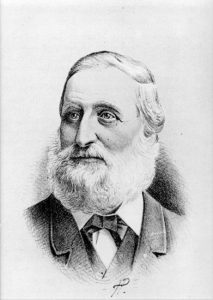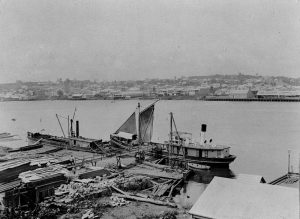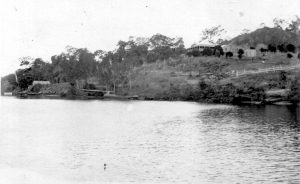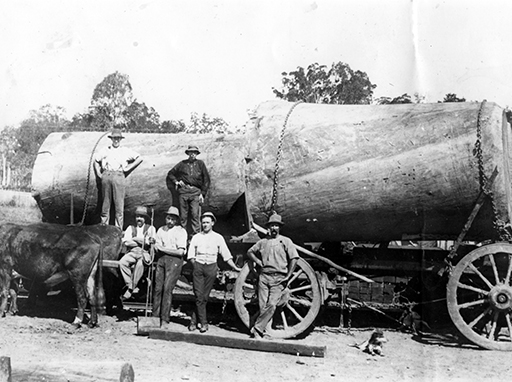Although his name hasn’t been immortalised in Sunshine Coast landmarks, William Pettigrew was a big player in the latter half of the 19th century.
There’s a Pettigrew Street in Mooloolaba but unlike the Petries, the huge impact he made when it came to opening up the Sunshine Coast isn’t reflected in creeks and roads.
A prominent businessman and politician in his day, Pettigrew was born in Scotland in 1825.

He arrived in the colony of Moreton Bay aboard the Fortitude in 1849, a decade before the state of Queensland was created and during the next 50 years, opened the Sunshine Coast for business.
Working as a surveyor, Pettigrew (pictured) quickly recognised the potential of the timber industry. He established Brisbane’s first steam sawmill in William St in 1853, and others on the Mary River at Dundathu and Maryborough.
By now the Petries had reported of the rich timbers to be found north of Brisbane and in 1842, had influenced Governor Gipps to declare the Bunya Proclamation, which meant that no timber licences would be granted and settlement was prohibited in the ranges north of Moreton Bay.
But with an expanding population after the colony became a state, this was repealed and the Unoccupied Crown Lands Occupation Act of 1860 was one of the first to be passed by Queensland Parliament. It was all systems go for squatters and timbergetters.
Love nostalgia? So do we. Help keep more great Coast memories alive by subscribing to our free daily news feed. Go to Subscribe at the top of this story and add your name and email. It’s that simple.
In June 1862, Pettigrew was part of a group who sailed north to the Maroochy River and spent a week assessing the Maroochy-Mooloolah area.
Within a year, Pettigrew had logs making their way from the mouth of the Maroochy River via Mooloolah Heads (Mooloolaba) to his mill in Brisbane.
He then began operating steam-powered vessels in the Maroochy River, the most famous being the Gneering, which was the first steamer to carry timber from the Noosa River, and the Tarshaw which sailed the Maroochydore-Brisbane route from 1886-98.

In 1864, Pettigrew purchased his first two parcels of land, which had become available under the provisions of the Unoccupied Crown Lands Occupation Act.
European settlement of the Maroochy River officially began with these two purchases.
By 1880, Pettigrew controlled most of the coastal land between the south bank of the Maroochy River and the north bank of the Mooloolah River.
Within five years, his shipping activities included produce from two sugar mills and Maroochydore was the main port. In 1891, he opened a sawmill at Maroochydore, just upstream from Wharf St.
In 1899, Pettigrew fell on hard times. His decline had begun after the discovery of Gympie gold which led to the opening of the land route between Brisbane and Gympie that would eventually replace water transport.
This, combined with the Depression of 1890-93 and the devastating flood of 1893 which cost him his third vessel the Tadorna Rahjah, sealed his fate.
The “Gneering” had been lost to a sandbank near the Maroochy River mouth in 1892. It was dismantled and beached on Goat Island. The hulk was exposed in 1997 but has not been seen since.
Pettigrew went into voluntary liquidation in 1898 and the Maroochydore Receiving Office which had serviced his employees, was closed.

A visionary who designed machines, ships and bridges, he served as an alderman and mayor on the Brisbane Municipal Council, was a chairman of the Caboolture Divisional Board (forerunner of Maroochy Shire Council) and a member of the legislative council.
In parliament, he promoted railways and improved sanitation, supported moves to end convict transportation and encouraged free immigration. It is said he first penned the name “Buderim”.
Pettigrew died on October 28, 1906 at Bowen and was buried in the local cemetery. His diaries have since become a useful resource on the history of colonial Queensland.
This flashback is brought to you by veteran Sunshine Coast journalist and history writer Dot Whittington, also the editor of Your Time Magazine.





